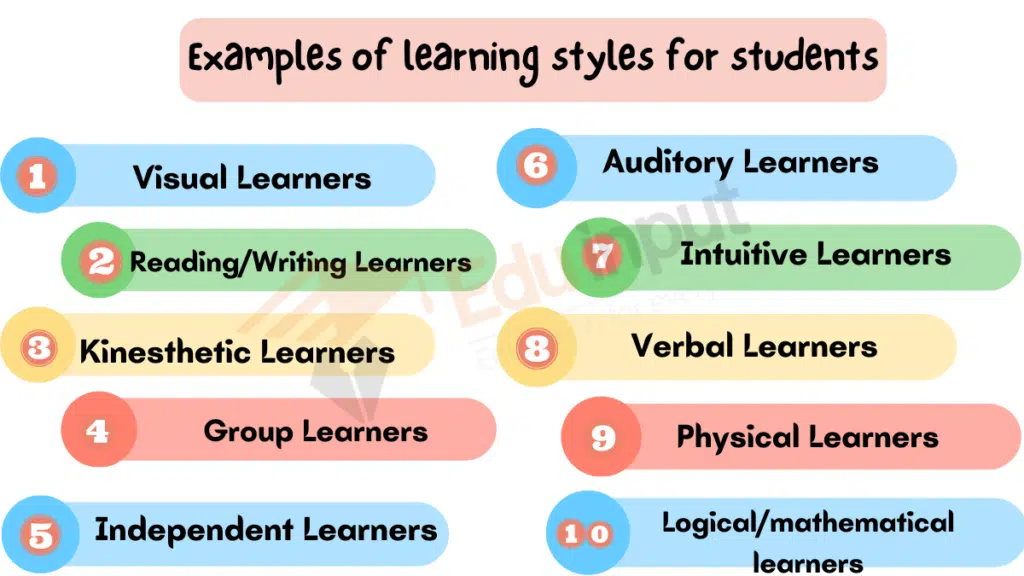14 Examples of learning styles for students
No two students learn in exactly the same way. Each has a unique learning style that allows us to best understand and retain new information.
Identifying your personal learning style can transform your educational experience by enabling you to tailor your studying to suit your needs.
Once you understand how you learn, you can leverage that insight to study smarter, get more out of classes, and excel academically.
Taking the time to discover your learning style opens the door to achieving your full potential as a student.
In this blog post we will talk about examples of learning styles for students.

Examples of learning styles for students
1: Visual Learners
Visual learners grasp information best through pictures, diagrams, charts, and videos. They benefit from color-coded notes, mind maps, and visual aids in the classroom.
2: Auditory Learners
Auditory learners learn best through listening. They retain information from lectures, discussions, and audio books. Recording and replaying lectures can be particularly helpful for them.
3: Reading/Writing Learners
These learners are most comfortable with text-based materials. They excel at reading textbooks, taking detailed notes, and writing essays. They may benefit from summarizing information in their own words.
4: Kinesthetic Learners
Kinesthetic learners thrive on hands-on activities and physical experiences. They learn by doing and prefer to engage in experiments, role-playing, or interactive projects.
5: Group Learners
Learn best working and studying with others. Tips: form study groups, teach others.
6: Independent Learners
Learn best studying alone. Tips: self-paced instruction, independent projects.
7: Intuitive Learners
Learn best when they can get an overall picture and connect concepts. Tips: group ideas, theme mapping.
8: Verbal Learners
Verbal learners have a knack for words. They excel in languages, enjoy debates, and are skilled at writing. Engaging in discussions and using vocabulary-rich study materials suits them.
9: Physical Learners
Learn well connecting physical motion like touching, doing, building. Tips: hands-on activities, field trips.
10: Logical/mathematical learners
Logical learners enjoy working with numbers and logic puzzles. They excel in subjects like mathematics and science. Problem-solving and critical thinking activities suit their style.
11: Social learners
Social learners thrive in group settings. They enjoy studying with classmates, engaging in group discussions, and collaborating on projects. Study groups and peer interaction are beneficial for them.
12: Solitary learners
In contrast to social learners, solitary learners prefer studying independently. They concentrate best in quiet environments, often using self-paced online courses or written materials.
13: Naturalistic Learners
Naturalistic learners have a deep affinity for the outdoors and the natural world. They learn best when studying topics related to nature, ecology, or environmental science.
14: Musical Learners
Musical learners have a strong connection to music. They often use melodies or rhythms to remember information. Creating mnemonic songs or incorporating music into their study routine can be effective.
Identifying your learning style can significantly enhance your educational experience. Remember that most students have a mix of learning styles, and it’s beneficial to adapt your study techniques to match your strengths.
Experiment with various approaches to find what works best for you, and don’t be afraid to combine different learning styles to maximize your learning potential. Embracing your unique learning style will help you become a more effective and confident learner.



Leave a Reply